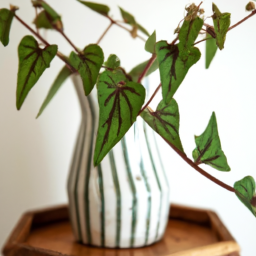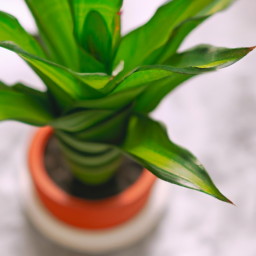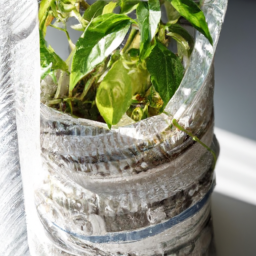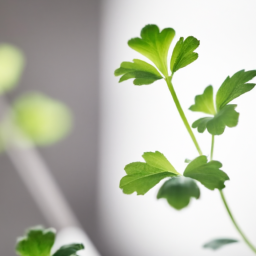
Are you looking to add some greenery to your indoor space but don’t have much natural light? Look no further! In this blog post, we will be discussing the best indoor no light plants that are perfect for brightening up any room, even without direct sunlight. Whether you have a windowless office or a dimly lit corner in your home, these plants are sure to thrive and bring a touch of nature indoors. So, let’s dive in and discover which plants are the perfect fit for your low-light space!
Top 5 Indoor Plants That Thrive in Low Light Conditions
Introduction
When it comes to indoor plants, finding the right ones that can thrive in low light conditions can be a challenge. However, there are some plants that are well-suited for such environments and can still add beauty and greenery to your space. In this guide, we will explore the top 5 indoor plants that can thrive in low light conditions.
Snake Plant
Benefits of Snake Plant
The snake plant, also known as mother-in-law’s tongue, is a popular choice for indoor spaces due to its ability to thrive in low light conditions. It is a hardy plant that requires minimal care, making it perfect for beginners or those with a busy schedule. The snake plant is also known for its air-purifying properties, making it a great choice for improving indoor air quality.
One of the key benefits of the snake plant is its ability to survive in low light conditions, making it an ideal choice for rooms with limited natural light. It can thrive in indirect sunlight or even artificial light, making it a versatile option for various indoor spaces.
Additionally, the snake plant has a unique appearance with tall, upright leaves that add a touch of elegance to any room. It is a low-maintenance plant that requires minimal watering and can tolerate neglect, making it a great choice for those who may not have a green thumb.
Caring for Snake Plant
When caring for a snake plant in low light conditions, it is important to place it in a spot where it can receive some indirect sunlight. While the plant can survive in low light, it still benefits from some natural light to thrive. Water the plant sparingly, allowing the soil to dry out between waterings to prevent root rot.
Snake plants are tolerant of a wide range of conditions, but they prefer well-draining soil and moderate humidity levels. Avoid overwatering the plant, as this can lead to root rot and other issues. With proper care, your snake plant can thrive in low light conditions and add beauty to your indoor space.
Overall, the snake plant is a great choice for those looking for an indoor plant that can thrive in low light conditions. With its air-purifying properties, unique appearance, and low-maintenance care requirements, it is a top choice for any indoor space.
ZZ Plant
Benefits of ZZ Plant
The ZZ plant is another popular choice for indoor spaces that have low light conditions. It is a hardy plant that can thrive in a variety of environments, making it a versatile option for any indoor space. The ZZ plant is known for its glossy, dark green leaves that add a touch of elegance to any room.
One of the key benefits of the ZZ plant is its ability to thrive in low light conditions, making it an ideal choice for rooms with limited natural light. It can survive in indirect sunlight or even artificial light, making it a great option for offices or other spaces with minimal natural light.
Additionally, the ZZ plant is a low-maintenance plant that requires minimal care. It is drought-tolerant and can survive long periods without water, making it a great choice for those who may forget to water their plants regularly. The ZZ plant is also known for its air-purifying properties, making it a great choice for improving indoor air quality.
Caring for ZZ Plant
When caring for a ZZ plant in low light conditions, it is important to place it in a spot where it can receive some indirect sunlight. While the plant can survive in low light, it still benefits from some natural light to thrive. Water the plant sparingly, allowing the soil to dry out between waterings to prevent root rot.
ZZ plants prefer well-draining soil and moderate humidity levels. They are tolerant of a wide range of conditions, but they do not like to sit in waterlogged soil. Avoid overwatering the plant, as this can lead to root rot and other issues. With proper care, your ZZ plant can thrive in low light conditions and add beauty to your indoor space.
Overall, the ZZ plant is a great choice for those looking for an indoor plant that can thrive in low light conditions. With its glossy, dark green leaves, air-purifying properties, and low-maintenance care requirements, it is a top choice for any indoor space.
Cast Iron Plant
Benefits of Cast Iron Plant
The cast iron plant is a tough and resilient plant that can thrive in low light conditions. It is known for its dark green, leathery leaves that add a touch of elegance to any room. The cast iron plant is a slow-growing plant that requires minimal care, making it a great choice for beginners or those with a busy schedule.
One of the key benefits of the cast iron plant is its ability to survive in low light conditions, making it an ideal choice for rooms with limited natural light. It can thrive in indirect sunlight or even artificial light, making it a versatile option for various indoor spaces. The cast iron plant is also drought-tolerant and can survive long periods without water.
Additionally, the cast iron plant is known for its air-purifying properties, making it a great choice for improving indoor air quality. It is a low-maintenance plant that requires minimal care, making it a top choice for any indoor space.
Caring for Cast Iron Plant
When caring for a cast iron plant in low light conditions, it is important to place it in a spot where it can receive some indirect sunlight. While the plant can survive in low light, it still benefits from some natural light to thrive. Water the plant sparingly, allowing the soil to dry out between waterings to prevent root rot.
Cast iron plants prefer well-draining soil and moderate humidity levels. They are tolerant of a wide range of conditions, but they do not like to sit in waterlogged soil. Avoid overwatering the plant, as this can lead to root rot and other issues. With proper care, your cast iron plant can thrive in low light conditions and add beauty to your indoor space.
Overall, the cast iron plant is a great choice for those looking for an indoor plant that can thrive in low light conditions. With its dark green, leathery leaves, air-purifying properties, and low-maintenance care requirements, it is a top choice for any indoor space.

How to Choose the Best Indoor Plants for Dark Spaces
Understanding Light Requirements
When selecting indoor plants for dark spaces, it’s important to understand the light requirements of different plant species. Some plants thrive in low light conditions, while others require more sunlight to grow and flourish. It’s essential to choose plants that can survive and thrive in the specific lighting conditions of your home or office.
One way to determine the light requirements of a plant is to look at its natural habitat. Plants that are native to tropical rainforests, for example, are accustomed to low light conditions and can thrive in dark spaces. On the other hand, plants that are native to sunny desert climates may not do well in low light environments.
Another factor to consider is the direction and intensity of natural light in your space. If your dark space receives some natural light from a window, you may have more flexibility in choosing plants that require low to moderate light. However, if your space is completely devoid of natural light, you’ll need to focus on plants that can thrive in artificial light.
Top Plants for Dark Spaces
There are several indoor plants that are well-suited for dark spaces and can thrive with minimal light. Here are some top picks for low light environments:
1. Snake Plant (Sansevieria): The snake plant is a hardy and low-maintenance plant that can survive in low light conditions. It has striking upright leaves and can help purify the air in your space.
2. ZZ Plant (Zamioculcas zamiifolia): The ZZ plant is another low light plant that is perfect for dark spaces. It has glossy, waxy leaves and can thrive with minimal care.
3. Peace Lily (Spathiphyllum): The peace lily is a popular indoor plant that can tolerate low light conditions. It produces beautiful white flowers and helps improve air quality.
4. Pothos (Epipremnum aureum): Pothos is a versatile plant that can thrive in low light and bright, indirect light. It has trailing vines and comes in a variety of leaf colors.
5. Cast Iron Plant (Aspidistra elatior): As the name suggests, the cast iron plant is extremely tough and can survive in low light conditions. It has dark green, leathery leaves that add a touch of elegance to any space.
Tips for Caring for Indoor Plants in Dark Spaces
While choosing the right plants is important, proper care is essential for their survival in dark spaces. Here are some tips for caring for indoor plants in low light environments:
1. Water sparingly: Plants in dark spaces typically require less water than those in bright, sunny spots. Be sure to let the soil dry out between waterings to prevent root rot.
2. Rotate regularly: Since plants in dark spaces may not receive even light distribution, it’s important to rotate them regularly to ensure all parts of the plant receive adequate light.
3. Monitor humidity levels: Low light environments can sometimes be more humid, so be sure to monitor humidity levels and adjust watering accordingly to prevent mold or mildew growth.
By following these tips and choosing the right plants for your dark space, you can create a lush and thriving indoor garden that adds beauty and greenery to your home or office. Remember to observe your plants regularly and make adjustments as needed to ensure their health and longevity.

Low Maintenance Indoor Plants That Don’t Need Natural Light
Introduction
When it comes to indoor plants, many people think that they need a lot of natural light to thrive. However, there are actually several low maintenance indoor plants that can survive and even thrive in low light conditions. These plants are perfect for those who live in apartments or homes with limited sunlight, or for those who simply don’t have a green thumb. In this guide, we will explore some of the best indoor plants that don’t need natural light.
One of the key factors to consider when choosing indoor plants that don’t need natural light is their ability to thrive in low light conditions. Some plants are naturally adapted to low light environments, while others can tolerate low light but may not thrive as well. It’s important to choose plants that are well-suited to the specific lighting conditions in your home.
Best Indoor Plants That Don’t Need Natural Light
When it comes to low maintenance indoor plants that don’t need natural light, there are several options to choose from. One popular choice is the snake plant, also known as mother-in-law’s tongue. This plant is extremely hardy and can survive in a wide range of lighting conditions, making it perfect for low light environments. Snake plants are also known for their air purifying properties, making them a great choice for improving indoor air quality.
Another great option for low light environments is the peace lily. Peace lilies are known for their beautiful white flowers and glossy green leaves. They can thrive in low light conditions, but they will produce more flowers if they receive some indirect sunlight. Peace lilies are also great air purifiers, making them a popular choice for indoor spaces.
A third option for low light indoor plants is the cast iron plant. As the name suggests, this plant is extremely hardy and can survive in a wide range of conditions. Cast iron plants have dark green leaves and can thrive in low light environments. They are also very low maintenance, making them a great choice for busy individuals or those who are new to plant care.
In addition to these options, there are several other indoor plants that can thrive in low light conditions. Some other options to consider include the ZZ plant, pothos, and spider plant. These plants are all relatively low maintenance and can survive in low light environments, making them great choices for indoor spaces with limited sunlight.
Tips for Caring for Indoor Plants That Don’t Need Natural Light
While low maintenance indoor plants that don’t need natural light are relatively easy to care for, there are still some important tips to keep in mind to ensure their health and longevity. One key tip is to avoid overwatering your plants, as this can lead to root rot and other issues. Be sure to allow the soil to dry out between waterings, and always use a well-draining potting mix.
Another important tip is to regularly dust the leaves of your plants to keep them clean and free of dust and debris. Dust can block sunlight from reaching the leaves, which can hinder the plant’s ability to photosynthesize. Simply wipe the leaves with a damp cloth or gently mist them with water to keep them clean and healthy.
Finally, be sure to monitor the humidity levels in your home, as some indoor plants that don’t need natural light prefer higher humidity levels. You can increase humidity by placing a humidifier near your plants, or by placing a tray of water near your plants to help increase moisture in the air. By following these tips, you can ensure that your indoor plants thrive in low light conditions.
In conclusion, there are several low maintenance indoor plants that don’t need natural light that can thrive in low light environments. By choosing the right plants and following some simple care tips, you can enjoy the beauty of indoor plants in your home, even if you don’t have a lot of natural light. Consider adding some of these plants to your indoor space to bring a touch of greenery and beauty to your home.
I’ll leave you with these final thoughts
Are you looking to bring some greenery into your home but don’t have a lot of natural light? No need to worry, there are plenty of indoor plants that thrive in low-light conditions. Some of the best indoor no light plants include the snake plant, pothos, and peace lily. These plants are not only easy to care for but also help purify the air in your home.
Snake plants, also known as mother-in-law’s tongue, are a popular choice for low-light environments as they can survive with minimal sunlight. Pothos are another great option, known for their trailing vines and ability to thrive in low-light conditions. Peace lilies are also a top choice, with their elegant white flowers and ability to remove toxins from the air. With these no light plants, you can bring a touch of nature into your home even in the darkest corners.
Common Questions and Answers:
Q1. What are some of the best indoor plants that can thrive without direct sunlight?
A1. Some of the best indoor plants that can thrive in low light conditions include snake plants, pothos, peace lilies, spider plants, and ZZ plants.
Q2. How often do indoor no light plants need to be watered?
A2. Indoor no light plants typically need to be watered less frequently than plants that require direct sunlight. It’s important to check the soil moisture before watering to avoid overwatering.
Q3. Can indoor no light plants improve air quality in a room?
A3. Yes, indoor no light plants can help improve air quality by removing toxins and pollutants from the air through a process called phytoremediation.
Q4. Do indoor no light plants require any special care or maintenance?
A4. Indoor no light plants require minimal care and maintenance. They thrive in low light conditions and can tolerate infrequent watering.
Q5. Are there any benefits to having indoor no light plants in a home or office?
A5. Yes, indoor no light plants can provide numerous benefits such as improving air quality, reducing stress, boosting mood, and adding a touch of greenery to indoor spaces.
Dr. Olivia Green is a botanist with over two decades of experience in indoor plant cultivation. She holds a Ph.D. in Plant Biology and has dedicated her career to researching plant behavior in controlled environments. Dr. Green is passionate about helping plant enthusiasts master the art of indoor gardening through her extensive knowledge and practical insights.


